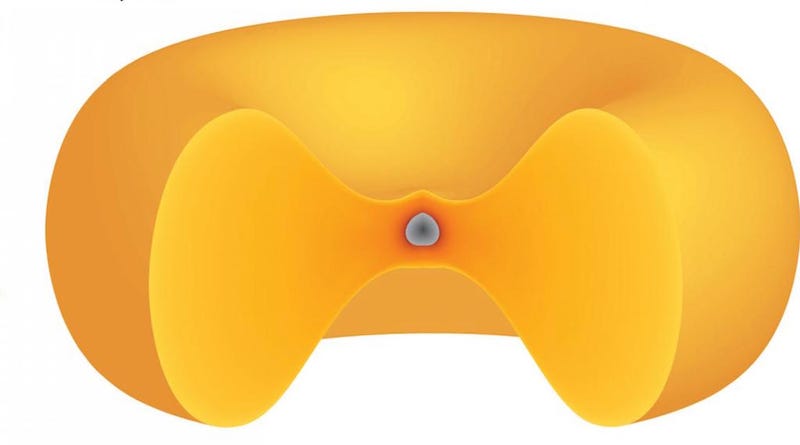 Image: Simon Lock, Harvard University
Image: Simon Lock, Harvard University
Planets sort of look like big basketballs in space, floating around aimlessly. Sometimes they have rings. Other times, they look like gnocchi. More or less, to the average stargazer, planets have roughly the same shape—but a pair of scientists has just thrown a most delicious curveball into this whole equation. Apparently, doughnut planets might be a thing.
Technically, these objects are called “synestia”—an amalgam of “syn-,” “together” and “Hestia,” the Greek goddess of architecture. In a new paper published in the Journal of Geophysical Research, planetary scientists Simon Lock at Harvard University and Sarah Stewart at UC Davis posit that Earth may have been a synestia in its youth. These doughnut-shaped objects might even explain the formation of other terrestrial planets like Mars, Venus, and many more outside our solar system.
To learn more about these whacky doughnuts, researchers ran models of how spinning objects might have collided with each other in our young planetary neighborhood. Earth is thought to have been formed after the birth of the Sun drew numerous small particles together, eventually creating larger clumps. Those lumps of material accreted into terrestrial planets, which, in the early days of our solar system, underwent some epic collisions before settling down.
“By analyzing calculations of giant impacts and models of planet formation, we show that typical rocky planets are substantially vaporized multiple times during accretion,” the researchers wrote. In other words, if an object was very big, very hot, and hit another object at a very high angular momentum, it could result in a synestia. Earth was probably a synestia for only a couple hundred years before it cooled down, contracted, and became sphere-like, which is possibly why we don’t currently live on a vaporized-rock-doughnut-planet.
Woulda been cool, though.
“We show that rocky planets are vaporized multiple times during their formation and are likely to form synestias,” the researchers wrote. “The different structures of hot, rotating planets change our understanding of multiple aspects of planet formation, including the origin of our Moon.”
Here’s to hoping someone out there finds a doughnut planet in a starry neighborhood of desserts.
[Journal of Geophysical Research]